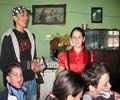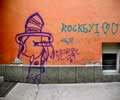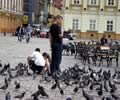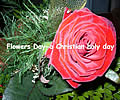
CLUJ NAPOCA, ROMANIA—“It’s a bit confusing,” says Mihai Bicà, a 21-year-old university student in Romania. “There’s the Roma, an ethnic minority found in countries across Eastern Europe and elsewhere. Then there are Romanians. Only two percent—no one knows the exact number—of Romanian’s are Roma. They are not one and the same.”
And then there are the misperceptions of the Roma people, long caricatured as undesirable nomads—often called gypsies—traveling the hemisphere.
“The majority of people have a cliché about the Roma people,” continues Mihai. “They steal, they are bad, they are the bad part of the society. They don’t see the good part. A problem of ours, as Roma, is that we don’t show them our tradition, our good parts. That’s our problem, and we are working on that. But the majority people should know that we need a lot of support from them. We are trying, but when a society refuses to help you, refuses to see your good parts, it’s quite difficult to succeed.”
Since 2001, the Resource Center for Roma Communities in Cluj Napoca, Transylvania (the heart of the Roma population in Romania) has sought to provide that support. It works to improve living conditions within the Roma communities and to improve communication between Roma and non-Roma people. Engaging Roma youth like Mihai is another priority. Until recently, the majority of Roma youth did not attend school regularly and few went on to university.
Indeed, in 2005 the governments of Central and Southeastern Europe kicked off what is called the “Decade of Roma Inclusion,” aimed at ending the exclusion (and often self-exclusion) that has left Roma, young and old alike, on the margins of society, no matter the country.
In Romania, the circumstances of the Roma are complicated by the country’s long history of occupation and oppression. For centuries, parts of today’s Romania were under different rule (the Turkish Ottoman Empire, the Austro Hungarian Empire, Russian Empire) and after World War II, Romania was under the Soviet influence until 1990. For twenty-five of those years, the dictator Nicolae Ceausescu created a draconian police state until he was executed in December 1989.
“What links the Romanian and Roma peoples,” says Claudia Macaria, program director at the Resource Center for Roma Communities, “is a quest for dignity. Their voices, our voices, have been silenced too long.”
Side by Side
In a rapidly developing country like Romania, the contrasts between old and new, progressive and traditional, prosperous and poor, between one part of town and another can be remarkable. These contrasts can quickly become part of the landscape, though, absorbed and taken for granted. In the two audio slideshows featured here, the Roma youth in our Adobe Youth Voices team take on the challenge of finding and photographing these parallel worlds.
“Side by Side in Cluj, Romania” | May 2008
“Stiluri de Viata” (“Lifestyles”) | September 2007
Face to Face
Mihai Bicà and Titus Harcu have a lot to say about themselves and their identity as Roma youth. Here, they talk about what they hope to do in the future, their families, and Roma stereotypes and traditions.
Mihai and Titus: Two Roma Youth I
Mihai and Titus: Two Roma Youth II
Short Stories
For Olimipia, Ovidiu, Ramona and Roxana, the Roma hillside village of Baciu, on the outskirts of Cluj Napoca, is home, with all of its Roma traditions. For Ale, home and family are split between her birth family and the facility where she lives much of the week, with other young people who for one reason or another cannot live with their family. For Karima, the graffiti found on so many of the walls around Cluj are an invitation to self-expression. In thirteen audio slideshows, the Roma youth in our group use photographs, music, and text to weave their own personal, short stories.
 |
Comunitatea Romilor Din Baciu | Roma Community of Baciu |
 |
Familia Mea | My Family |
 |
Let Your Mind Be Free |
 |
Timisoara |
 |
The Small Things in Life |
 |
Beyond |
 |
Ageless Child |
 |
Natura – Un Adevarat Paradis! | Nature – A Real Paradise! |
 |
O Tiganca Si O Floare | One Roma Woman and One Flower |
 |
Youth Summit 2008 |
 |
Cei Mai Buni Prieteni | Best Friends |
 |
Baia Mare |
 |
Floriile O Sarbatoare A Reinnoirii | Flower’s Day – A Christian Holiday |
Bookmark with: ![]() Digg
Digg
![]() StumbleUpon
StumbleUpon
![]() Delicious
Delicious
![]() Reddit What are these?
Reddit What are these?


